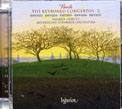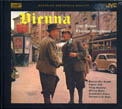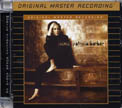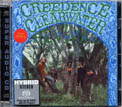You are reading the older HTML site
Positive Feedback
ISSUE
21
September 2005 - Excerpts from our latest SACD, DVD-A, and xrcd Reviews
Superbly surrounding piano version of the complete single-keyboard concertos of Bach

J. S. BACH, Vols. 1 & 2 The Keyboard Concertos, Angela Hewitt, piano/Australian Chamber Orchestra — Hyperion (2-discs) multichannel SACD - SACDA67307 & 8 ****:
This is an equally dazzling display of the Hyperion multichannel recording technique and the musicianship of the marvelous pianist, Angela Hewitt. The seven Bach Keyboard Concertos date from the composer's final years as director of the Collegium Musicum in Leipzig. Several of them are reworkings of violin and oboe concertos. Concerto movements also were used by Bach in several cantatas. Despite apparent redundancy, this music is as inventive, exuberant and masterfully wrought as The Brandenburg Concertos composed ten years earlier.
Born in Ottawa, Angela Hewitt in 1985 won the Toronto International Bach Piano Competition in memory of Glenn Gould. She is a most worthy bearer of the Gould legacy. Hewitt provides a full measure of Bach's unique outpouring of joy and solemnity. Achieving an ideal balance of emotion and scholarship, the overall effect of her playing is stunning. Her tone is crystalline, partnering ideally with the delicacy of her ornamentation.
The ACO, led from the violin by Richard Tognetti, includes 17 string players and one harpsichordist. They are joined by two flautists on loan from the Scottish Chamber and Sidney Symphony Orchestras. This responsive, finely tuned group makes music as one with Angela Hewitt. Recorded in Verbugghen Hall at the Sydney Conservatorium of Music in February 2005, the act of listening to these Bach keyboard works approaches rapture. Counterpoint has rarely been so clearly articulated, instrumental focus and balance seldom so naturally rendered. The multichannel format literally surrounds the listener with Bach's music.
Hyperion engineers have done Angela Hewitt, the ACO and, above all, J. S. Bach fine service. Essential music, exceptionally performed and recorded. A must! Ronald Legum
Sprightly concertos with virtuosic harpsichord part

Georg Anton Benda, Harpsichord Concertos = F minor, F major, G major, B minor – Sabine Bauer, harpsichord/La Stagione Frankfurt/Michael Schneider – CPO multichannel SACD 777 088-2, 69:01 ****:
Benda was headquartered in Berlin and his lifetime encompassed the latter three-quarters of the 18th century. He was one of those who was fairly well known in his time—especially for his stage works—but is all but forgotten today. His harpsichord concertos received considerable attention during his life. They show the attributes of works composed during the time that the Baroque period was winding down and the Classical period opening. Benda did not just label these as just keyboard concertos but was specific that they were for the harpsichord, which was an important member of the Baroque orchestra.
La Stagione numbers about 18 players and carries out a refined supporting role for the star of the proceedings—the harpsichord. The instrument is given many identifiable harpsichordal passages, and the degree of virtuosity required makes it clear these concertos are not for beginners. The outer movements combine sonata form tonal structure with Vivaldi's ritornello design. All are in three movements with the slow movement at center. But other than that they differ markedly from one another. The opening F Minor could be called a "Storm and Stress" sort of work. The F Major is the longest of the four and will soon remind one of the harpsichord sonatas of Scarlatti with their frequent crossing of hands over one another—with barely enough time to properly strike the note and get back to where the hand originally was. The G Major is the shortest and lightest of the concertos, full of folk-flavored melodies and a humorous approach, using strangely contrasting ideas in the first movement.
The harpsichord is well-balanced with the chamber orchestra, being neither mic'ed too closely nor with too reverberant a characteristic. In some passages it plays more as another instrument of the orchestra, but when its solos come on there is no doubt of the emphasis being on the harpsichord. The tempi in most of the outer movements is surprisingly brisk, but Bauer never misses on the Baroque ornamentation. The feeling of the hall environment is just right, and the surround mix places the orchestral players very definitely throughout the soundstage, which is horseshoe-shaped. John Sunier
Very highly recommended for all Reiner fans

Vienna, Music of the Strauss family and Carl Maria von Weber – Chicago Symphony Orchestra/Fritz Reiner, conductor – JVC XRCD24 JM-XR24025 – 49 min. *****:
When it comes to JVC's always excellent XRCD 24 RCA Living Stereo series, the question is not whether you need this disc—it's pretty much whether you're willing to part with the thirty or so dollars it's likely to cost you. Do you take a chance that maybe RCA will release the same material—usually with generous fillers—on SACD, maybe in three-channel sound, and probably for about ten bucks? When it comes to Fritz Reiner and the CSO, I tend to lose all fiscal responsibility and clumsily clutch at my wallet, rushing to get the cash out as quickly as possible; hearing this superb new XRCD 24 only serves to reassure me that I made the correct decision! This disc is stunning in every way possible, and sounds as close to the vinyl as any digital disc I've heard yet.
Listening to this disc caused quite a firestorm of activity for me—I spent the next hour or so afterward pulling out other XRCDs and RCA SACDs, listening, comparing and contrasting an assortment of titles. While I'm still mightily impressed with the SACDs, the XRCDs are no slouch either—the orchestral image is rock-solid, with a wide and deep soundstage, there's barely a trace of any hiss, and orchestral climaxes have tremendous dynamic impact. I got every bit the rush of excitement and satisfaction from my XRCD listening experience that I generally get from the SACDs—this disc made me re-examine my overall philosophy with regard to SACD vs XRCD.
One minor quibble—for a while, JVC had been printing the liner notes on XRCDs in English, which was great! Now, we're back to everything in Japanese. Who really cares—especially once the music starts playing! Do you need this disc? Yes, if you're a total Reiner junkie like I am—and with the current, sorry state of classical music marketing (and recorded music, in general), the prudent (and safe) thing to do is to throw caution to the wind and get this disc—you won't be sorry! Very highly recommended. Tom Gibbs
Music originally created for spatially-separated performance, now heard as it was in 17th century Venice

Giovanni Gabrieli, Music for San Rocco – Gabrieli Consort and Players, Paul McCreesh, director – DG/Archiv 00289 477 0862 – 2 Multichannel SACDs, 79 min. ****:
On the sixth day of August, 1608, English traveler Thomas Coryat witnessed a musical performance by the Scuola Grande di San Rocco; the performance marked St. Roch's Day, and Coryat's detailed account offers one of the most dramatic descriptions that exists of early seventeenth century music making. An intense amount of scholarly research among the Venetian archives has resulted in this disc, Music for San Rocco, which is a historically informed recreation of the day's musical festivities. While a good deal of the program presented here is based on scholarly speculation, there's also significant documentation to support the musical choices here, including the work of falsettist Bartolomeo Barbarino, whose performance on the day is documented in the Venetian archives.
The performances include a number of motets, intertwined with instrumentals in the form of both sonatas for diverse instruments and various pieces written for the organ. Any lover of early seventeenth century music will be nothing less than thrilled by the works presented here, and the sound quality is spectacular. The surround mix offers a stage perspective, and the listener is interspersed among the players and vocalists.
My only quibble has to do with the following: why is this set, which totals barely 79 minutes, offered on two SACDs? There's nothing here to offer any reason for the break in the performance from disc one to disc two, and though I know recorded media blanks are no longer a significant cost item, still—what is the logic? Regardless, very highly recommended, especially to lovers of authentic instrument performances. Tom Gibbs
Barber's unique style of nearly speaking the lyrics is at heart of these audiophile gardens of delight

Patricia Barber, Verse – Patricia Barber, vocals, piano and Fender Rhodes; Michael Arnopol, bass; Neal Alger, guitars; Dave Douglas, trumpet; Joey Baron and Eric Montzka, drums – Mobile Fidelity UDSACD 2027 – Stereo-only Hybrid SACD – 52 min. *****:
I have to give Patricia Barber credit—she goes her own way. She refuses to follow most of the scripted jazz conventions and writes most of her own material, and on the rare occasion when she covers a tune, it's usually not anything that's ever been previously given any kind of jazz treatment. Her vocal style, in which she often nearly speaks the lyrics (rather than singing them), may not appeal to everyone. But her records are virtual audiophile gardens of delight—each successive song is a case study in unusual and often sparse instrumentation, employing unconventional meters and time signatures and strange rhythms. This excellent disc from Mobile Fidelity is no exception, and will only help cement her mystique among her rabid and loyal fan base.
The performance is pure Barber—and the sound quality, as delivered by MoFi, is sensational. This is one of those discs that, as good as the Red Book CD portion of the disc is—the SACD stereo layer is light years beyond it in every aspect of the recorded sound. Bass is nearly stentorian—this disc will shake your walls! The SACD layer has a presence and palpability about it that is so true to life you'd swear Patricia Barber is in your listening room. I almost constantly felt the need to check my center channel and surrounds to make sure that nothing was coming from them—this disc paints a broad and deep soundstage, with PB firmly anchored in the middle.
The supporting cast is superb, especially guitarist Neal Alger and trumpeter Dave Douglas, whose often sparse runs and fills contribute extensively to the unique palette from which Patricia Barber paints her abstractions. This disc is not to be missed!
Tracks: The Moon; Lost In This Love; Clues; Pieces; I Could Eat Your Words; The Fire; Regular Pleasures; Dansons La Gigue; You Gotta Go Home; If I Were Blue. Tom Gibbs
The original 1968 Creedence hit album, for the first time without distortion and with a huge soundstage

Creedence Clearwater Revival – Fantasy/Analogue Productions CAPJ 8382 SA Stereo-only SACD *****:
This record was originally released in July 1968, but surely sounds as revolutionary today as it did then. The band consisted of John Fogerty on lead guitar and vocals, Tom Fogerty on rhythm guitar, Stu Cook on bass, and Doug Clifford on drums. This group of four produced a huge sound that translates to a big, wide soundstage with present, three-dimensional, palpable vocals. Some of the songs have a bit of phasiness that I can only assume was intentional on the original records. When centered, the voice is locked in place and music comes from the sides, but on some of the songs sound can come from all around without being completely wrapped around the listener (as it would be if the speakers/recording were entirely out of phase). I'm used to hearing distortion when portions of CCR's material gets loud--especially on vocals. But with this release, on the first track when Fogerty yowls away his vocals just get plain loud and don't break up. My hat goes off to Steve Hoffman and Kevin Gray—the fellows responsible for the remastering job. They worked on the same tapes for other CCR releases (including the LPs), so their familiarity with material surely helped. It's truly magic how much better the material sounds than on the normal CD I have. Percussion is smooth, yet clean and shimmering like it should be and you can easily hear the difference between the different tracks in recording quality. Sure on songs like "Suzie Q" there are hard-panned images like the stereo Beatles' records everyone knows where voices can come out of one speaker and instruments out of the other, but there is usually center fill as well.
The liner notes in the disc are written by none other than Ben Fong-Torres, the editor and writer of Rolling Stone during the band's early days (mentioned in the film Almost Famous). Before CCR re-formed in '67, the name they went under was the Golliwogs. Fogerty developed his booming blues shout from the times when he had to work without a microphone. The music they make is a mixture of R&B, blues, country, folk, and even jazz. The band has a Southern feel to them, but the interesting part is that none of them are from the South. It's true that the most recognizable (hit) songs on the record are cover tunes, but the rest of the material is in the same vein and is (dare I say) just as good. This is one great rockin' rock'n'roll record and with SACD treatment, sounds as good as ever! Songs included are: I Put A Spell On You; The Working Man; Suzie Q; Ninety-Nine And A Half; Get Down Woman; Porterville; Gloomy; Walking On The Water. Brian Bloom
Cabaret singer's unexpected takes on hits of Elvis and Dylan

Barb Jungr, Love Me Tender – Linn AKD 255 Multichannel SACD, ****1/2:
If you hate it when you go to a concert and all your favorite band plays is cover songs, then don't go see Barb Jungr's fall tour. She is tearing up Europe and West following the recent release of Love Me Tender; which includes 11 songs performed by Elvis and two by Bob Dylan. Her exotic voice drives me to fantasize about her sitting atop a piano in a smoky pub, holding a cigarello in one hand and a tall glass of Boddingtons in the other. "Heartbreak Hotel" blows me away every time I listen to it. The fresh rendition with Barb's signature jazzy overtone touch is so breath-taking, you really can't believe the rock roots behind it. To compare Barb with other singers wouldn't do her talents justice, but if I had to, I would say the closest audible comparison would be Johnette Napolitano from Concrete Blonde. I have never been a fan of Elvis' music, but get me to Graceland baby, I have been reborn!!!!
Barb, a cabaret singer by trade, has herein followed up her 2002 release, Every Grain of Sand, a superb album chock full of Bob Dylan's songs. Her raspy, Marlboro-perfected voice out performs any impersonator I have ever heard. Barb's soulful voice does wonders for all 13 tracks on the album. In the Ghetto is perfectly crooned. I can only imagine how lucky the band members felt at the end of that session. One of my favorites, "Are You Lonely Tonight," is done with such raw emotion, that I can't visualize it being sung by Elvis.
Barb's classical rendition of the rebellious song "I Shall Be Released" (one of my favorite Bob Dylan songs snuck into this album) could start riots in the prisons with her, "Come on boys follow me!" attitude. Overall I thoroughly enjoyed the album. I have never been a fan of Elvis' music when performed by him, but these covers are amazing. I just wish Barb was gigging over here, maybe at the Green Mill in Chicago… I dream big!
Tracks include: Love Letters; Heartbreak Hotel; Long Black Limousine; Wooden Heart; Are You Lonesome Tonight?; Kentucky Rain; In the Ghetto; Love Me Tender; Always On My Mind; I Shall Be Released; Tomorrow is a Long Time; Looking for Elvis; and Peace in the Valley. Paul Pelon IV
Reviews reprinted with permission from Audiophile Audition

